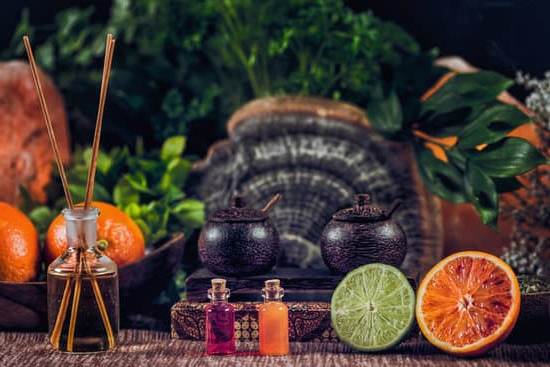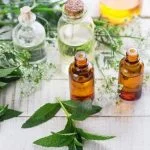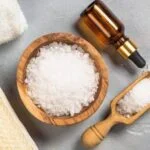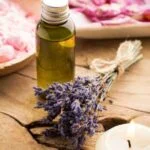Aromatherapy has been used for centuries as a natural way to promote health and well-being, and incorporating it into everyday products like liquid soap can enhance the benefits even further. In this article, we will explore the art of making aromatherapy liquid soap, including the basic principles, ingredients, and step-by-step process. If you’ve ever wondered how to make aromatherapy liquid soap at home, this guide will provide you with everything you need to know.
Aromatherapy liquid soap offers a unique blend of cleansing and therapeutic properties, making it a popular choice for those seeking a holistic approach to personal care. By harnessing the power of essential oils, this type of soap not only cleanses the skin but also provides aromatherapeutic benefits that can uplift the mood, alleviate stress, or even soothe minor ailments.
Whether you’re new to aromatherapy or an experienced enthusiast, creating your own aromatherapy liquid soap allows you to customize the scent and properties according to your preferences. From choosing the right essential oils to understanding best practices for preserving your homemade creation, this article will walk you through each step of the process.
So get ready to embark on a journey into the world of aromatherapy and discover how easy it is to make your own aromatic liquid soap at home.
Understanding the Basics
When it comes to making aromatherapy liquid soap, understanding essential oils and their aromatherapeutic properties is crucial. Essential oils are concentrated liquids derived from plants, each with its own unique scent and potential health benefits. These oils have been used for centuries in various cultures for their healing and therapeutic properties.
Aromatherapeutic Properties of Essential Oils
Essential oils are known for their ability to promote relaxation, uplift the mood, and provide a sense of well-being. Some oils, such as lavender, chamomile, and bergamot, are commonly used for their calming effects and can be useful in creating a soothing liquid soap. On the other hand, citrus oils like lemon, grapefruit, and orange are known for their energizing and uplifting properties and can be incorporated into a liquid soap recipe for a refreshing experience.
Safety Considerations
It’s important to note that essential oils are highly concentrated substances and should be used with caution. Before using any essential oil in your liquid soap recipe, it’s essential to research its safety guidelines. Certain essential oils may not be suitable for individuals with certain medical conditions or during pregnancy. Always dilute essential oils properly before incorporating them into your homemade liquid soap.
Compatibility With Soap Base
When choosing essential oils for your aromatherapy liquid soap, consider how they will interact with the chosen soap base. Some essential oils may have a more potent scent that could overpower the soap’s natural fragrance or affect its texture. It’s essential to select essential oils that complement the chosen soap base and enhance the overall aromatherapy experience.
Getting Started
When it comes to making aromatherapy liquid soap, it is essential to gather all the necessary ingredients and equipment before diving into the process. Here’s a detailed guide on what you’ll need to get started with making your own aromatic liquid soap at home.
First and foremost, you’ll need a high-quality liquid soap base. This can be easily purchased from a craft store or online. Additionally, you will need essential oils that are suitable for use in soap making. Some popular choices include lavender, peppermint, eucalyptus, and citrus oils.
In addition to the soap base and essential oils, you will also need other ingredients such as carrier oils (like coconut or olive oil), natural colorants (such as mica powder or natural pigments), and optional additives like dried herbs or exfoliants for added texture. When it comes to equipment, you will require a mixing bowl, stirring utensils, a soap mold or container for storing the finished product, and labels for proper identification.
| Ingredients | Equipment |
|---|---|
| Liquid soap base | Mixing bowl |
| Essential oils | Stirring utensils |
| Carrier oils | Soap mold/container |
| Natural colorants/additives | Labels |
The Step-by-Step Process
Making your own aromatherapy liquid soap can be a fun and rewarding experience. Not only do you get to customize the scent and properties of the soap, but you also have the satisfaction of creating a product that is free from harsh chemicals and synthetic fragrances. In this section, we will provide a detailed guide on how to make aromatherapy liquid soap at home.
To start, gather all the necessary ingredients and equipment for making the liquid soap. You will need a high-quality liquid castile soap base, essential oils of your choice, carrier oils (such as almond oil or jojoba oil), distilled water, a mixing bowl, a whisk, and empty pump bottles for storing the finished product.
Next, decide on the essential oil blend that you want to use for your aromatherapy liquid soap. Popular choices include lavender and chamomile for relaxation, peppermint and eucalyptus for an invigorating blend, or citrus oils like lemon and sweet orange for a refreshing scent.
| Ingredients | Equipment |
|---|---|
| Liquid castile soap base | Mixing bowl |
| Essential oils | Whisk |
| Carrier oils (almond oil or jojoba oil) | Empty pump bottles |
| Distilled water |
Choosing the Right Essential Oils
Understanding the Role of Essential Oils in Aromatherapy
Essential oils are key components in aromatherapy practices, known for their various therapeutic properties and delightful scents. When choosing essential oils for your homemade liquid soap, it’s important to consider both the aroma and the potential benefits they can provide. Whether you’re looking to create a refreshing, energizing blend or a calming, soothing one, there are numerous essential oils to choose from that cater to your desired effects.
Popular Essential Oil Blends for Aromatherapy Liquid Soap
Some popular essential oil blends for aromatherapy liquid soap include:
- Citrus Bliss: A blend of citrus essential oils such as orange, lemon, and grapefruit, known for their uplifting and invigorating properties.
- Lavender Fields: Combining lavender and chamomile essential oils creates a calming and relaxing scent ideal for unwinding after a long day.
- Minty Fresh: Peppermint and eucalyptus essential oils provide a refreshing and energizing blend perfect for morning showers.
- Floral Bouquet: Rose, geranium, and ylang-ylang essential oils come together to create a beautifully fragrant mix with stress-relief benefits.
Experimenting With Aromatherapy Blends
One of the best parts of making your own aromatherapy liquid soap is the ability to experiment with different essential oil blends. Consider combining different scents to create your own unique fragrance or adjusting the concentration of each oil to tailor the strength of the scent. By understanding the properties of each essential oil and how they interact with one another, you can create customized blends tailored to your specific needs and preferences.
With such an extensive variety of essential oils available, there are endless possibilities for creating personalized aromatherapy liquid soaps that cater to different moods and purposes. The key is experimenting with different blends until you find the perfect combination that resonates with you.
Tips and Tricks for Customizing Your Aromatherapy Liquid Soap
When it comes to making aromatherapy liquid soap, there are various ways to customize the product to suit your personal preferences and needs. Here are some tips and tricks to help you create a unique and personalized aromatherapy experience:
1. Experiment with different essential oils: Essential oils are the key ingredients in aromatherapy liquid soap, and they each offer their own unique benefits and fragrance. Consider experimenting with different essential oil blends to create a scent that is pleasing to you. Some popular essential oil options for liquid soap include lavender for relaxation, peppermint for a refreshing scent, and eucalyptus for its invigorating properties.
2. Add natural colorants: If you want to add some visual appeal to your aromatherapy liquid soap, consider incorporating natural colorants such as mica powder or botanical extracts. Not only will this enhance the aesthetic of your product, but it can also contribute to the overall sensory experience.
3. Include exfoliants or moisturizers: To further customize your aromatherapy liquid soap, consider adding exfoliating agents like ground oats or poppy seeds for a gentle scrubbing effect. You can also incorporate moisturizing ingredients such as coconut oil or shea butter to leave your skin feeling smooth and nourished after use.
4. Package creatively: Once you have made your customized aromatherapy liquid soap, take the time to package it creatively. You can use decorative bottles or jars, add custom labels, or even include a personalized message for a thoughtful gift.
By following these tips and tricks, you can elevate your aromatherapy liquid soap-making experience and create a product that is uniquely tailored to your individual preferences.
Storing and Preserving Aromatherapy Liquid Soap
After creating your own aromatherapy liquid soap, it is essential to store and preserve it properly to ensure its longevity and effectiveness. Here are some best practices for storing and preserving your homemade liquid soap with essential oils:
- Store in a cool, dark place: To prevent the degradation of the essential oils in your liquid soap, it is important to store it in a cool, dark place away from direct sunlight and heat. This will help maintain the potency of the essential oils and prolong the shelf life of your aromatherapy liquid soap.
- Use airtight containers: Transfer your homemade liquid soap into airtight containers to minimize exposure to air and moisture, which can cause the essential oils to degrade. Mason jars or amber glass bottles with tight-fitting lids are ideal for storing aromatherapy liquid soap.
- Label and date: Properly label your containers with the name of the blend, date of creation, and ingredients used. This will not only help you keep track of the various blends you have made but also allows you to monitor the shelf life of your liquid soap.
By following these best practices for storing and preserving your aromatherapy liquid soap, you can ensure that it maintains its quality and efficacy for an extended period. With proper care and attention to storage, you can continue to enjoy the benefits of your homemade liquid soap with essential oils for months to come.
The Aromatherapy Experience
In conclusion, making your own aromatherapy liquid soap can be a rewarding and fulfilling experience. Not only do you have the satisfaction of creating something with your own hands, but you also have the opportunity to customize it to your liking.
By using essential oils with specific aromatherapeutic properties, you can create a blend that caters to your individual needs and preferences. Whether you are looking for relaxation, rejuvenation, or simply enjoy the uplifting scents, homemade aromatherapy liquid soap allows you to tailor your bathing experience.
The process of making aromatherapy liquid soap may seem intimidating at first, but with the right ingredients and equipment, it can be quite simple. Understanding the basics of essential oils and their properties is crucial in creating an effective and enjoyable product. By following a detailed guide and incorporating popular aromatherapy blends, you can ensure that your homemade liquid soap will not only cleanse your skin but also provide the aromatic benefits of essential oils.
Furthermore, storing and preserving your aromatherapy liquid soap is key to ensuring its longevity. By following best practices for storage and usage, you can enjoy your homemade creation for an extended period of time. With these tips and tricks in mind, you can fully immerse yourself in the aromatherapeutic experience each time you use your personalized liquid soap. So why not embark on this creative journey today and discover how to make aromatherapy liquid soap for yourself?
Frequently Asked Questions
How Do You Make Liquid Soap With Essential Oils?
Making liquid soap with essential oils involves diluting castile soap, adding essential oils for scent, and mixing in a carrier oil like coconut or almond. The process also includes adding vitamin E oil for preservation and transferring the mixture to a bottle.
How Do You Make Aromatherapy Soap?
Aromatherapy soap is made by mixing glycerin melt-and-pour soap base with essential oils known for their therapeutic properties. This entails melting the soap base, adding the essential oils, pouring the mixture into molds, and allowing it to set before use.
How Do You Add Fragrance to Liquid Soap?
Fragrance can be added to liquid soap by incorporating essential oils or fragrance oils during the soap-making process. It’s important to calculate the right amount of fragrance based on the volume of liquid soap being scented to ensure that it doesn’t become overpowering.

Are you looking for a natural way to improve your health and wellbeing?
If so, aromatherapy may be the answer for you.





